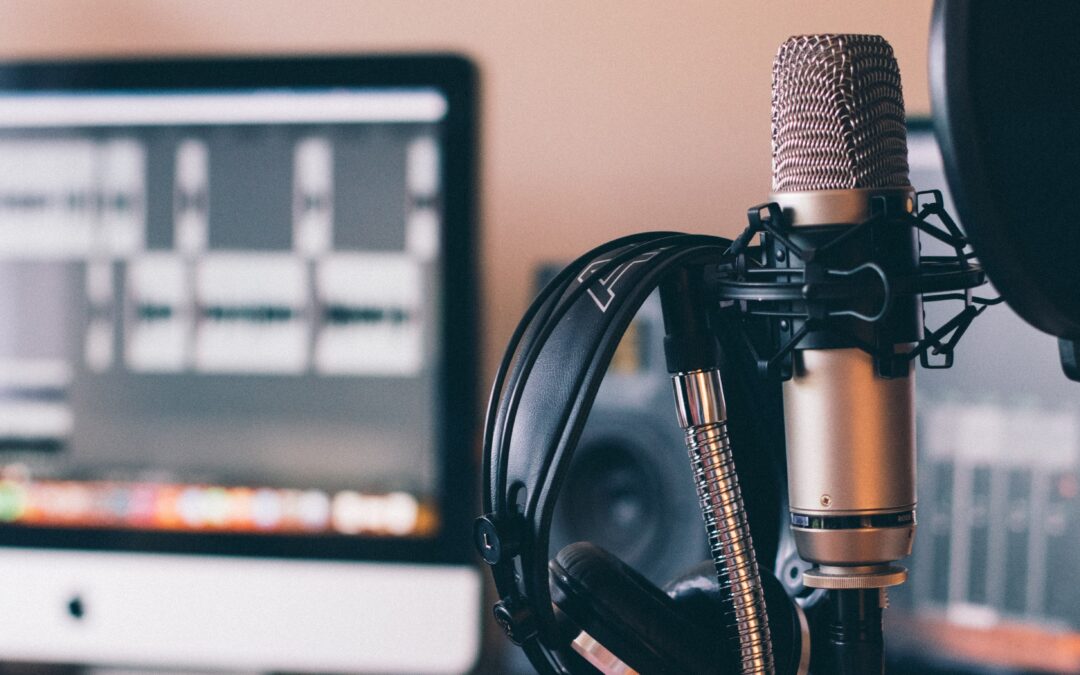From true crime, to lifestyle, to pop culture, podcasts have become a main form of media. Millions of people tune in regularly to listen to their favorite shows as they go about doing their day to day tasks. Podcasting has become an increasingly popular medium for content creators to share their ideas, opinions, and stories with audiences worldwide, but an important part of creating this type of content is the standard podcast volume level.
One issue that listeners often encounter though is the inconsistency in volume levels across different podcasts. Some episodes are too loud, while others are too quiet, which can be frustrating and disrupt their listening experience.
The ear is sensitive to the human voice, you don’t want to listen to someone screaming in your ear for 54 minutes do you? The importance of standard podcast volumes is not something everyone thinks about, but let’s break down a few reasons why it’s affecting the listening experience.
Listening Experience
Firstly, it’s important to understand what we mean by standard podcast volumes. According to Sage Audio, the loudness of a podcast is measured in decibels (dB), and the industry standard is -16 LUFS (Loudness Units Full Scale). This means that the average loudness of a podcast should be -16 dB LUFS, which keeps the volume consistent across different podcasts.
It’s worth noting that some platforms, such as Apple Podcasts, have their own guidelines for loudness levels, so it’s important to check the specific requirements for each platform. Having a standard loudness level ensures listeners can skip from podcast to podcast without having to adjust the volume constantly.
For example, if someone is listening to a podcast that is too quiet, they may have to turn up the volume, which can be damaging to their ears if the next podcast they listen to is too loud. This inconsistency can be frustrating for listeners, who may have to constantly adjust the volume to find a comfortable level.
Successful podcasters like Alex Cooper and Ashley Flowers make sure that the sound quality and level of their content remain consistent throughout their episodes. Poor sound quality can be a major turnoff for listeners and can have a negative impact on a podcast.

Fortunately, there are several steps podcasters can take to make sure their audience enjoys a consistent listening experience.
Use Quality Equipment
The first step to keeping a consistent sound quality is to use quality equipment. This includes a good microphone, headphones, and audio interface. Investing in high-quality equipment can significantly improve the sound of your recordings, making it easier to maintain consistency.
Will you be recording remotely? Will you host guests? These are the questions to think about when choosing which equipment to invest in. Come up with a plan and do your research before you purchase your podcasting tools. Riverside gives good insight into what the best equipment options are for any budget.
Choose a Suitable Recording Space
When it comes to recording, choosing the right environment is crucial. A space with good acoustics will help to reduce background noise and echoes, ensuring that your voice is clear and easy to understand. If possible, try to record in a room with minimal background noise and consider using sound-absorbing materials such as foam panels or blankets to reduce echo.
You can create your own recording space at home or rent a space near you. Either way, you’ll most likely need to spend a little bit of money in order to have a space that’s conducive to the right sound quality.
Set the Right Recording Levels
Another critical step is to ensure that the recording levels are set correctly. If the levels are too low, it can result in a weak and distorted sound. On the other hand, if the levels are too high, it can result in clipping or distortion. To set the correct levels, do a few test recordings before starting the podcast, and adjust the levels as necessary.
Standard volume levels keep podcasts consistent with other forms of media, such as music and television. Most media content follows a standard volume level, and podcasts should be no exception.
Consistent Editing
Editing is an essential part of the podcasting process. It helps to remove unwanted sounds and create a well-balanced audio track. During the editing process, make sure that you are applying the same level of editing to each episode. Consistency in editing can help maintain sound quality across all episodes.
More mainstream podcasters are starting to include video in their episodes. But if you’re a team of one or two and don’t have that kind of production value, you can add music or transitions to change up the pace of your content. Just make sure the sound levels don’t go over the -16 LUFS.
The Podcast Host ranked some of the best editing software podcasters of all levels are using. These range from Alitu to Adobe Audition.
Use Audio Processing Tools
Audio processing tools such as compression and equalization can be used to improve the sound quality of your recordings. Compression can help to even out the levels of your audio, making it easier to hear, while equalization can help to remove unwanted frequencies, resulting in a cleaner and clearer sound.
Software Testing Help compared 13 audio processing tools including Audacity, Adobe Audition CC, and Fission.
Sound Consistency is Key
Keeping your sound quality consistent is essential for any podcaster looking to grow their audience.
Standard podcast volumes can have a positive impact on the industry as a whole. By adhering to industry standards, podcasters can ensure that their content is accessible to as many consumers as possible. This is because some listeners may not have the ability to adjust the volume, such as those with hearing impairments or those listening in noisy environments.
Overall, standard podcast volumes are fundamental for both listeners and podcasters. It assures that the volume is consistent across different podcasts, providing a better listening experience and making podcasts more accessible to a wider audience.
If you are a podcaster, do your best to adhere to industry standards for loudness levels to create content that is accessible to as many listeners as possible. And if you are a listener, it’s worth checking the loudness level of your favorite podcasts so you can enjoy them without having to constantly adjust the volume.

